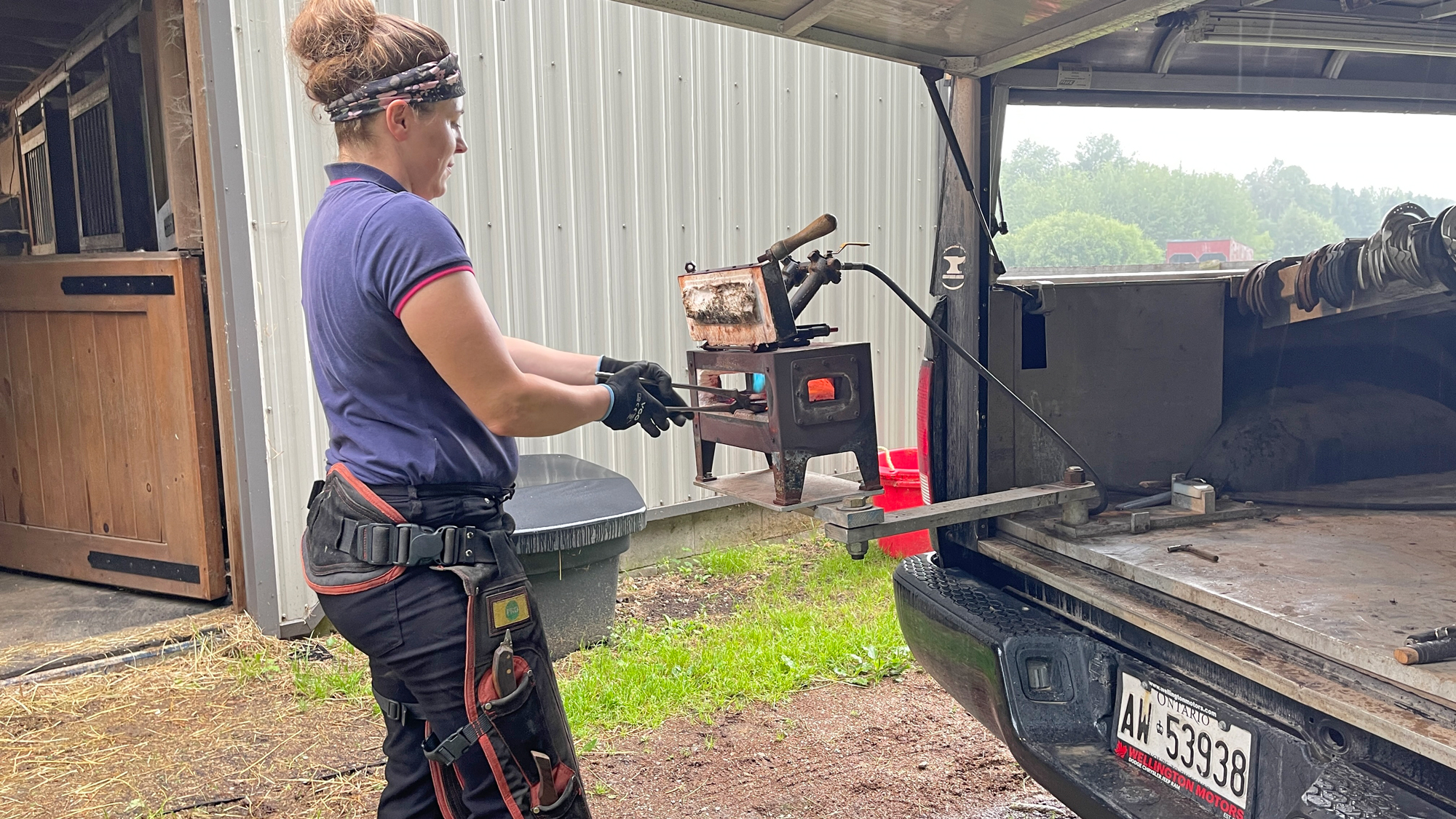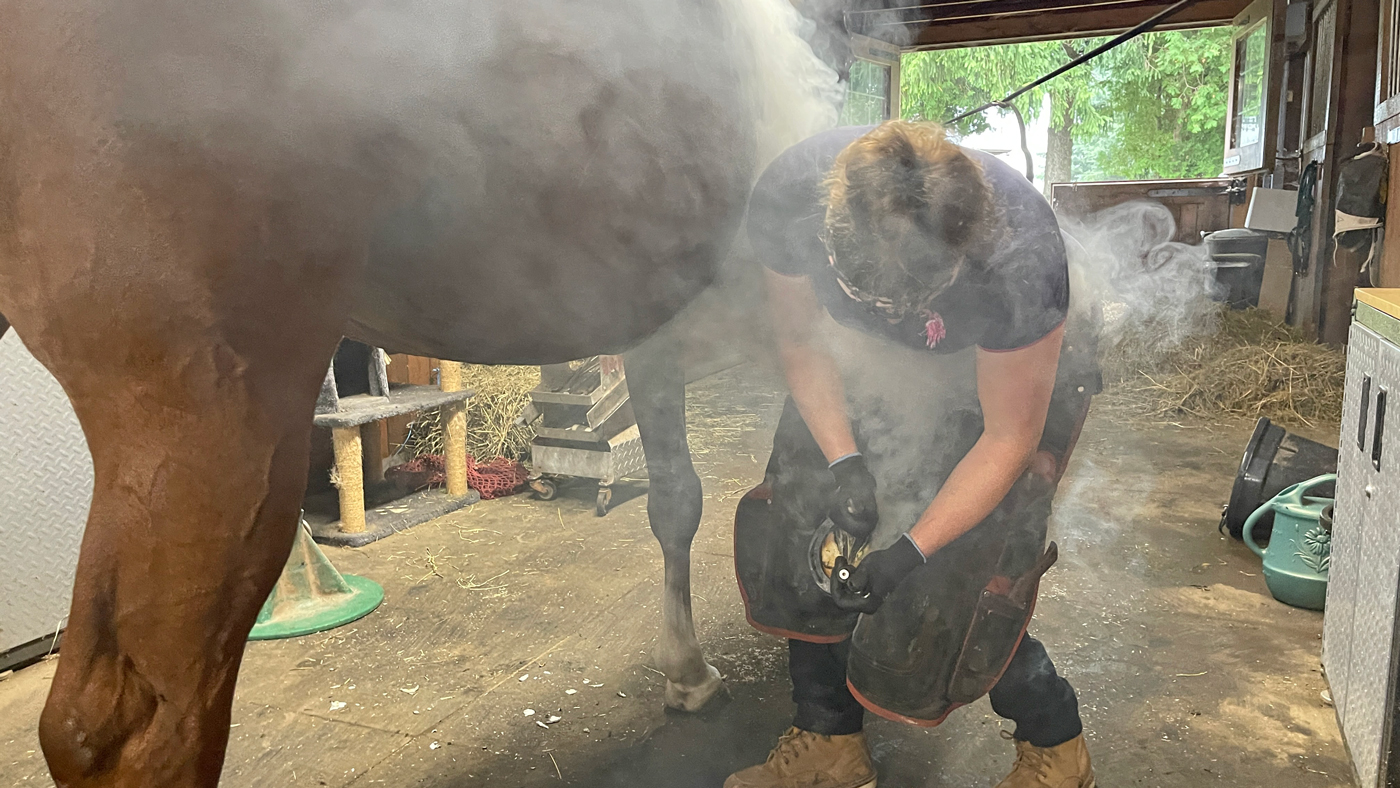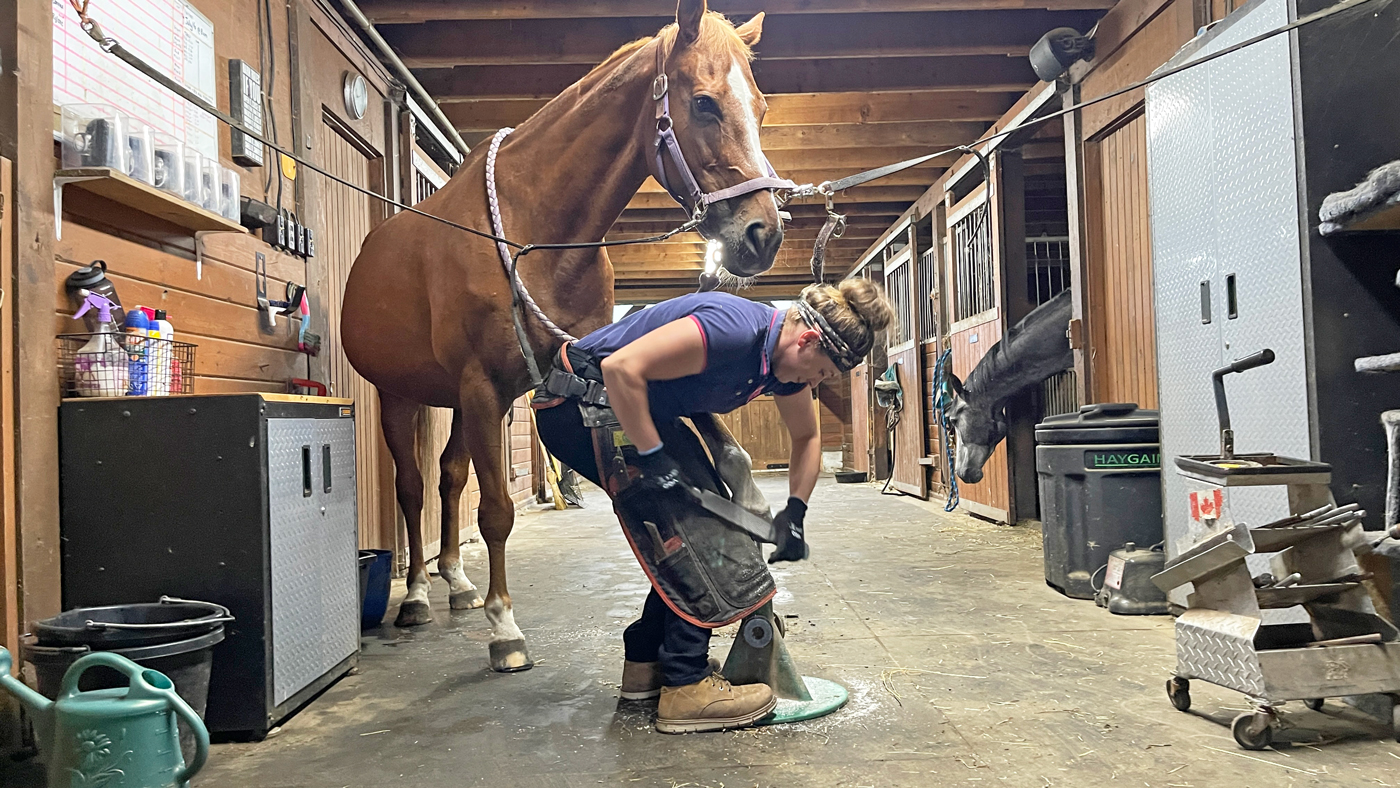BELWOOD – The art of the farrier is documented as far back as 300 B.C.
A forger and welder, shoemaker and toolmaker are among the roles required of a good farrier.
An understanding of equine psychology and anatomy, and an ability to diagnose ailments related to an equine’s foot are required to be a good farrier.
Essentially, a farrier must be a combination of all of these things, plus a veterinarian, to an extent, and a horse whisperer.
While there is some historical documentation of females performing the tasks of a farrier in history, it wasn’t until 1979 that the first female farrier, Ada Gates Patton, was licensed to shoe racehorses in North America.
In an industry that was dominated by males, the female farrier is no longer an anomaly in the equine world.
Sara Veenstra of Fergus has been a farrier for 13 years. Her business, Warrior Horseshoeing, takes her across Wellington County.
Choosing the profession seemed a natural progression for Sara, despite that at the time, female farriers were rare.
At 12, she got a pony named Sunny and fell in love with him.
She began learning about the art of being a farrier so that she could help take care of Sunny.
Veenstra also learned about body language and how to pace working with Sunny.
“I learned not to ask too much too quickly,” she said.
Between the ages of eight and 14, Veenstra said she wanted to be a veterinarian.
“But I realized there was going to be a lot of university and a lot of heartbreak,” Sara said.
“I still see heartbreak with horses struggling with their health and their feet, but I can help them.”
Veenstra completed a high school co-op with a farrier, attended Heartland Horseshoeing School in Missouri afterwards to study her trade, and interned with a farrier in Chicago.
“I wanted to be around horses and travel, not be in an office,” she said.
Veenstra works with equines from miniature and draft horses to some very high-profile hunter and dressage horses and is highly regarded in the profession.

Hot shoes – After 13 years in the business, Sara Veenstra has mastered the art of being a farrier. Pictured here at Maple Ridge Farm in Belwood, Veenstra cares for six horses every five to six weeks and brings all the tools of her trade with her to every appointment, including her forge and anvil. Photos by Lorie Black

Veenstra was referred to Lisa and James Young of Maple Ridge Farm in Belwood by Brian Mullins, a farrier well known and respected in North America.
Mullins and Veenstra have known each other for several years, and while Mullins regards Veenstra and her work highly, Veenstra looks up to Mullins.
“He’s a really good person. He’s always researching developments and has really in-depth knowledge about anatomy,” Veenstra said.
Young is grateful for Mullins’ recommendation of Veenstra.
“Her work speaks for itself. You can tell right away if a farrier doesn’t understand your horse and what it needs,” Young said.
“Sara has been phenomenal. Our coaches rave about our horses’ feet.”
“And it’s not easy, because it’s not only about their feet, it’s about their conformation and the way they move,” Young said.
“It’s not as simple as just trimming them. It’s a science, but it’s an art form too.”
Young said in the past, the farm had farriers she wasn’t comfortable leaving alone with the horses.
“It can be very stressful for the horses. Sometimes it’s the farrier’s energy, or the horses.”
Veenstra has been shoeing at Maple Farm for seven years now.
“She’s so good with them, Sara doesn’t need me to be here. The horses are so calm and relaxed with her. And that is worth its weight in gold,” Young said.
Veenstra enjoys working on her own. Her gentle but clear approach creates a kind of energy; trust seems to flow between her and the animal she is working with, creating a bubble of calm.
“I like building relationships with them and to get to understand their quirks. Like this, one,” Veenstra said of the horse, Breezee, she was working with when the Advertiser met with her.
“She’s a bit older and has some arthritis.
“She used to pull her leg away when she was particularly stiff, but now she asks for a break,” Veenstra said.
Veenstra hot shoes her horses. The method allows for a much more precise fit between shoe and foot and creates a seal to protect the foot from drying out or getting too much moisture.
Veenstra said hot shoeing and burning the foot makes it much easier to see pressure points that need attention.
“It means a lot to me that I can uncover what’s happening when a horse is really struggling with their feet. They’re sore. They’re having trouble walking. You can tell they’re in pain.
“I can do certain things with their shoes and be able to make them sound again. Sound and happy.
“That’s my favourite part of the job. Helping a horse that’s having a hard time.”
Veenstra said there is a sense of community that her profession brings.
With visits every five or six weeks throughout the year, Veenstra said, “Just in the 13 years I’ve been doing this, I’ve seen kids grow up. I’m part of my clients’ life in just a little way.”
For Young, Veenstra is part of the farm family.
“We’re very lucky to have Sara. Sara can never move away,” Young said with a smile.
Veenstra shares her knowledge and experience through teaching with The Ontario Farrier’s Association clinics.
“I know it’s important to pass on information,” Veenstra said.
She noted female farriers are more common than they were in the past, and many women are now aware of and choosing the profession.
“Initially, in general more men worked with horses. But now a lot of women do,” she said.
The last clinic she taught had close to a 50/50 split of male and female students.
For Veenstra, being a farrier is a way for her to work independently and with the animals she has always loved.
But there is a strong farrier community. Veenstra has taken part in several World Horseshoeing Classic competitions held in Kentucky with contestants from as far away as the United Kingdom.
“We’d work in a team of four, and each day, one of us would trim a foot and make a shoe. It was a really well-known contest, a nice contest,” Veenstra said.
But most of the time, it is a career that a farrier spends in the company of the animals they care for.
Veenstra hopes that high school students who want to work with horses become more aware of the trade.
For more information about the trade, visit ontariofarrier.ca.



